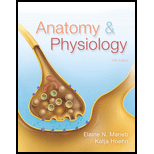
To review:
The purpose of fixing tissue for microscope viewing.
Introduction:
A group of cells, alike in structure and executing a common or associated function, is called a tissue. There are four different kinds of tissues: epithelial, connective, muscle, and nervous tissue. Majority of the organscontain all four types of tissue and their arrangements determine the structure and capability of the organ.
Explanation of Solution
A microscope is used to study the structure of tissues. Before that, the tissue specimen needs to be prepared and fixed with a fixing solution or agents like formaldehyde or paraformaldehyde. This solution forms cross-links within the tissue and fixes the proteins and tissues preserving its vitality, thus making it easier to study.
The basic aim or motive to fix the tissue before studying it under the microscope is to prepare the tissue for proper viewing and preserve it. This is done so that electrons can pass through the tissue. Therefore prior to viewing under the microscope, a tissue should be fixed and cut into thin pieces so as totransmit light or electrons. Further, fixing the tissue also prevents deterioration.
Therefore, the tissuespecimen should be fixed before viewing under the microscope, as it allows studying a particular tissue or protein and it gets preserved, avoiding any decomposition or damage.
Want to see more full solutions like this?
Chapter 4 Solutions
Anatomy & Physiology, Books A La Carte Edition (5th Edition)
- Surgical Tech For Surgical Tech Pos CareHealth & NutritionISBN:9781337648868Author:AssociationPublisher:Cengage
